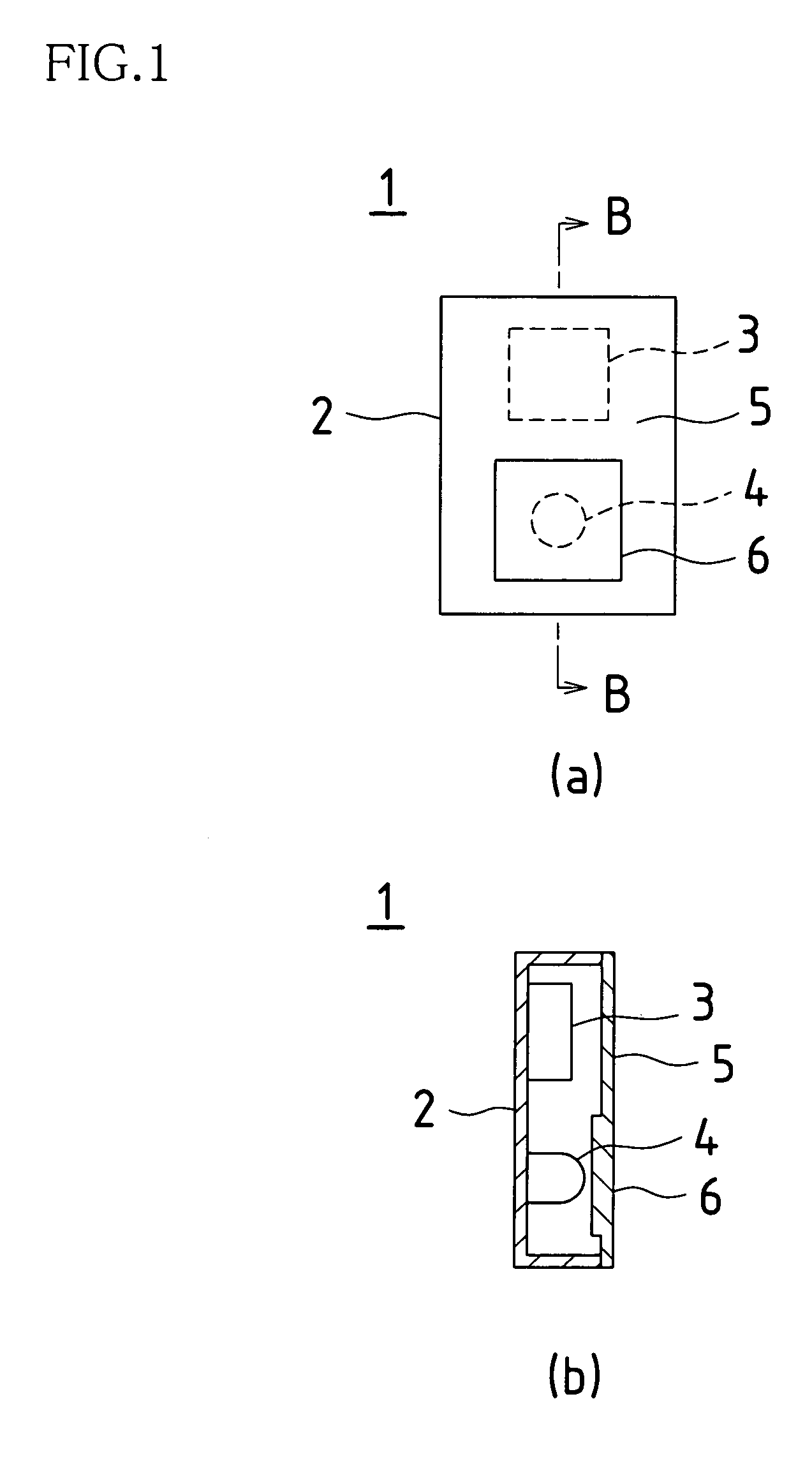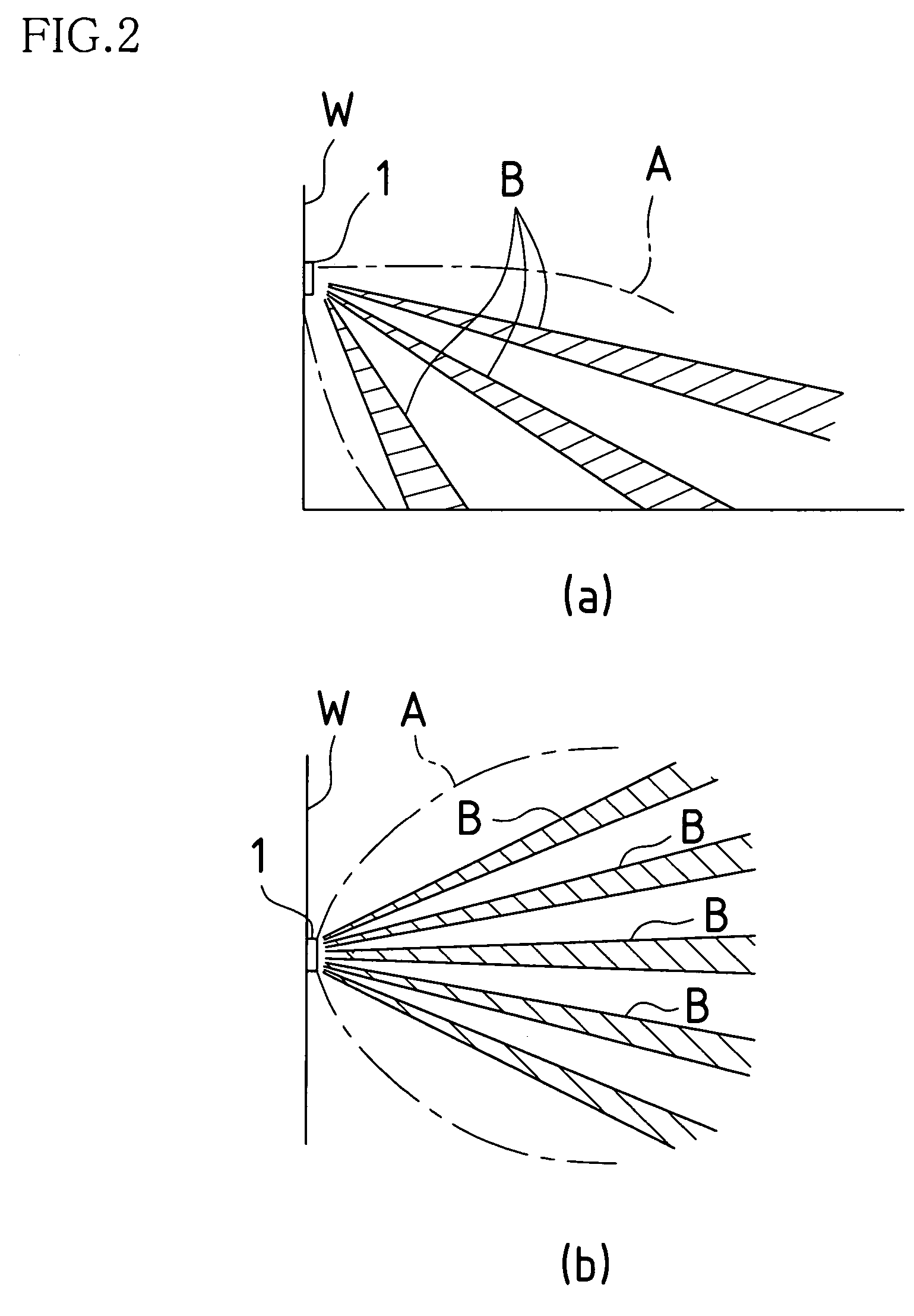Combined sensor
a sensor and combined technology, applied in the field of combined sensors, can solve the problems of false alarm, inability to set the beam position on the ground near the outer edge of the target, and inability to detect accurately, so as to avoid false alarm, enhance the reliability of the sensor, and avoid false alarm
- Summary
- Abstract
- Description
- Claims
- Application Information
AI Technical Summary
Benefits of technology
Problems solved by technology
Method used
Image
Examples
Embodiment Construction
[0029]Embodiments of the present invention will be described below with reference to the accompanying drawings. In the present embodiment, a description will be given of the case in which a combined sensor is used for a burglar system.
[0030]Description of the Overall Configuration of the Burglar System
[0031]FIG. 1 show a burglar sensor unit 1 used as a combined sensor in a burglar system according to the present embodiment. FIG. 1(a) illustrates a front view of the burglar sensor unit 1 while FIG. 1(b) a sectional view taken along line B—B of FIG. 1(a). The burglar sensor unit 1 accommodates an MW sensor 3 and a PIR sensor 4 in a case 2, with the front of the case 2 covered with a cover 5 that allows passage of microwaves and a Fresnel lens 6 formed on the front of the IR sensor 4.
[0032]FIG. 2 show the relationship between unit installation position and detection areas of the MR sensor 3 and the PIR sensor 4 when the burglar sensor unit 1 is installed (installed, for example, on the...
PUM
 Login to View More
Login to View More Abstract
Description
Claims
Application Information
 Login to View More
Login to View More - R&D
- Intellectual Property
- Life Sciences
- Materials
- Tech Scout
- Unparalleled Data Quality
- Higher Quality Content
- 60% Fewer Hallucinations
Browse by: Latest US Patents, China's latest patents, Technical Efficacy Thesaurus, Application Domain, Technology Topic, Popular Technical Reports.
© 2025 PatSnap. All rights reserved.Legal|Privacy policy|Modern Slavery Act Transparency Statement|Sitemap|About US| Contact US: help@patsnap.com



